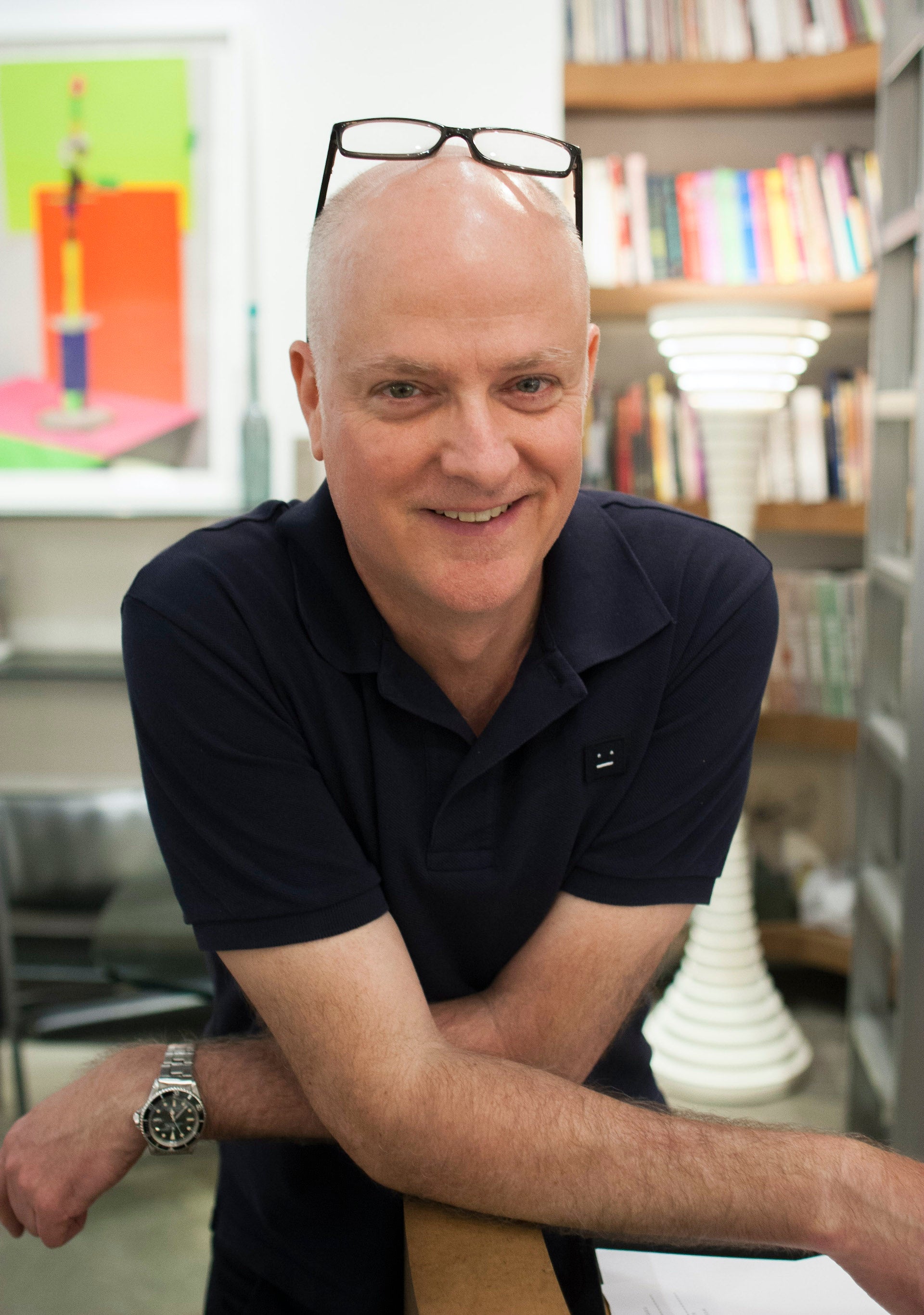VETTED
Patrick Parrish
Get to know this gallerist and eagle-eye for new talent
Patrick Parrish is always on the hunt for what’s new. Which could be why, in part, he was named one of the five most important new dealers on the forefront of design in 2016 by The New York Times. Add to that a feature in Volume Gallery’s Observers: The Intellectuals and Tastemakers of Design Culture for the book Temperature 2012, published on the occasion of the Museum of Art and Design’s Home Front: American Design Now program.
Patrick is a curator, collector, sometimes painter, member of Design Miami’s Vetting Committee as well as an exhibitor and the eye behind the popular blog and Instagram feed MONDOBLOGO. He currently has a thing for paper weights and thinks it’s really important to shut up sometimes. Learn more in our lively interview with Patrick, which includes a few designers he currently has his eye on.

What sparked your interest in design?
I’ve always been a collector from a very young age and was always attracted to older and more unusual things, whether they were coins, stamps, or rocks. But it wasn’t until college when I started going to flea markets and junk stores that I became aware of vintage design.
What’s on your desk right now?
Oh, man, A LOT! I’m kind of paperweight obsessed right now, and I have five of them by Enzo Mari and more by Carl Auböck.
You often work with new and emerging talent. Can you tell us about your discovery and selection process?
I listen and pay close attention to what other artists and designer friends are talking about and looking at. I ask them for suggestions for who to follow on Instagram and what shows to check out. I’ve had great success with that.

If you were new to collecting design, where would you start?
Start with something overlooked and cheap! Seriously though, I would advise people to go with their gut and keep to their budget, but also be prepared to stick their neck (and pocketbook) out when presented with an opportunity to buy something great.
Designers you currently have your eye on:
I have my eye on two at the moment: Julian Watts, who has his second solo show at the gallery in September, and Christopher Prinz, who will have his first solo show in NYC here at the gallery opening in late October. Both use humble materials—wood and metal, respectively—in new and exotic ways and are pushing the limits of the art vs. design argument.
Is there an era or designer that you feel is often overlooked?
I could name several, but at the moment I am very interested in American Machine Age design again. The Machine Age in America—the exhibition that debuted at the Brooklyn Museum in 1986 and then traveled to the Richard Meier-designed High Museum where I saw it—was and continues to be a source of inspiration.

The one design reference book everyone should have on their bookshelf:
Cara Greenberg’s Mid-Century Modern is a classic and has started many a collector down the modern design rabbit hole.
Notable memory from Design Miami:
I have so many, but the 2014 Curio booth we did with RO/LU was a highlight. And it was a wild ride from a social media perspective, as we were the most posted booth in both Art Basel and Design Miami according to Instagram. That was a lot of fun, but then again, every Design Miami is a blast!

Something you would like to see more of in the design world:
I would love to see more women contemporary designers as well as contemporary designers of color shown. In the historical design and art arena they are finally getting the attention they deserve, but in contemporary design we have a long, long way to go.
Best piece of advice you’ve ever received:
It’s a long story that you can read in my book The Hunt: Navigating the Worlds of Art & Design, but the short and sweet answer is "Keep your mouth shut!” This is very important if you are a collector or dealer, but hard to do if you are interested in educating people like I am—I’m not very good at it. But I promise you it can pay off!
